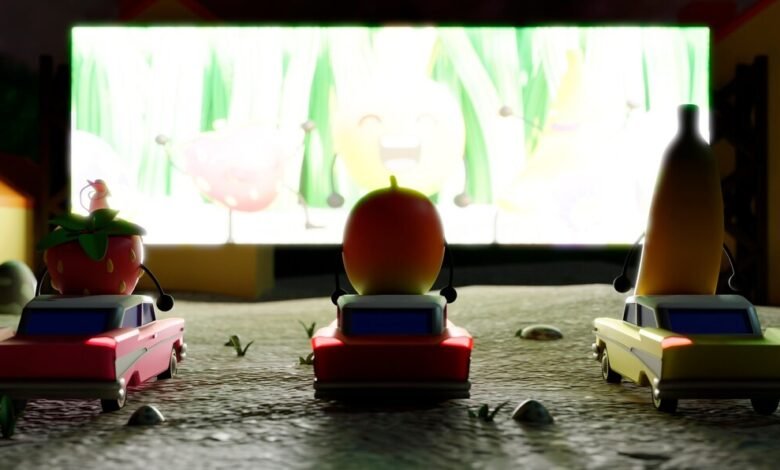Exploring Popcap Games in 1980 by 1020 Resolution

Popcap games in 1980 by 1020 resolution revolutionized the casual gaming industry with engaging, easy-to-learn, and visually appealing games. Known for their accessible design, Popcap created iconic titles like Bejeweled and Zuma, defining the era of pick-up-and-play gaming. While these games emerged in the late 1990s and 2000s, understanding their hypothetical adaptation to 1980 by 1020 resolution allows us to reimagine their legacy.
Introduction to Popcap Games
Popcap Games revolutionized the casual gaming industry with engaging, easy-to-learn, and visually appealing games. Known for their accessible design, Popcap created iconic titles like Bejeweled and Zuma, defining the era of pick-up-and-play gaming. While these games emerged in the late 1990s and 2000s, imagining their adaptation to a 1980 gaming landscape by a resolution of 1020 allows us to explore a fascinating “what if” scenario. This article delves into how Popcap’s philosophy aligns with the gaming limitations and innovations of the 1980s.
The Era of 1980 Gaming
Technological Landscape of 1980
The 1980s marked a transformative period in gaming history. The industry was dominated by arcade machines and early home consoles like the Atari 2600. Graphics were limited to 8-bit technology, offering pixelated yet captivating visuals. With resolutions far lower than today’s standards, such as 256×240 or similar, developers focused on gameplay to engage users.
Popular Game Genres in 1980
Arcade gaming thrived with titles like Pac-Man, Space Invaders, and Asteroids. These games emphasized score-chasing, simple mechanics, and addictive gameplay loops. The genre diversity included shooters, platformers, and puzzle games, setting a foundation for modern gaming.
Influence of Arcade Games
Arcade gaming shaped player expectations with its emphasis on immediacy and high replay value. Popcap’s core philosophy of creating fun, accessible games resonates with this ethos, making a theoretical alignment between Popcap games and the 1980s gaming culture plausible.
Display Resolutions in Gaming
Introduction to Resolution Standards
In gaming, resolution refers to the number of pixels displayed on the screen. In the 1980s, resolutions were constrained by hardware capabilities, often leading to blocky graphics. Developers compensated with clever use of color and animation.
Common Resolutions in the 1980s
The most prevalent resolutions of the era included 320×240 and 256×240, which were well-suited to CRT monitors. A hypothetical introduction of 1020 resolution, significantly higher for the time, would have offered unparalleled clarity and detail.
The Role of 1020 Resolution
While 1020 resolution wasn’t feasible in the 1980s, exploring its integration highlights how enhanced visuals could elevate gaming. Imagine Bejeweled with sharper, more vibrant gems or Zuma’s intricate paths rendered with unprecedented detail for the era.
Popcap’s Development Philosophy
Focus on Accessibility and Fun
Popcap’s approach revolved around creating universally enjoyable games. Titles required minimal instructions and could be enjoyed across demographics. This aligns with the simplicity-driven design of many 1980s games.
Integration of Graphics and Gameplay
Popcap balanced visual appeal with engaging mechanics. For example, Bejeweled utilized bright, colorful jewels that captured attention while maintaining intuitive gameplay—a principle mirroring 1980s arcade classics.
Simplicity in Design
The “easy to play, hard to master” mantra applied to Popcap and many early 1980s games. A game like Zuma would fit seamlessly into the arcade landscape, encouraging players to perfect their strategies for higher scores.
Iconic Popcap Games
Overview of Notable Titles
Popcap’s library includes timeless classics that defined casual gaming. Key titles like Bejeweled, Zuma, and Plants vs. Zombies illustrate their commitment to innovation and accessibility.
Bejeweled’s Early Concept
If Bejeweled existed in the 1980s, it might have taken inspiration from games like Tetris, relying on straightforward mechanics but with enhanced resolution like 1020 to elevate its aesthetic appeal.
Zuma and Its Influence
The fast-paced, puzzle-based gameplay of Zuma could have easily captivated 1980s arcade audiences. With 1020 resolution, the game’s vivid colors and smooth animations could redefine visual standards for the time.
The Role of Resolution in Gaming
How Resolution Impacts Gameplay
Higher resolutions improve gameplay by offering detailed graphics, which enhance immersion and clarity. This is particularly impactful in puzzle and strategy games, where visual cues are essential.
Enhancing Visual Clarity
A 1020 resolution could render objects with precision, allowing players to discern details easily. For example, gems in Bejeweled would appear more distinct, aiding quick decision-making.
Bridging Performance and Aesthetics
Balancing visual quality with smooth performance is critical. While high resolution improves aesthetics, maintaining optimal frame rates is essential for playability, especially in action-heavy games like Zuma.
Popcap Games Adaptation in 1020 Resolution
How Games Adapt to Different Displays
Adapting games for various resolutions involves reimagining graphics and scaling interfaces. Popcap’s design philosophy emphasizes adaptability, ensuring gameplay remains consistent regardless of display limitations.
Advantages of 1020 Resolution
Increased resolution enhances graphic fidelity, making games visually appealing. With 1020 resolution, even simple Popcap games could rival the artistry of advanced titles from their time.
Case Studies of Adaptations
Games like Bejeweled would showcase the beauty of higher resolution through intricate jewel designs, while Zuma could feature detailed paths and vibrant textures, amplifying their charm in an era dominated by pixel art.
Comparative Analysis of Resolutions
Benefits of Higher Resolutions
Higher resolutions, such as the hypothetical 1020 resolution in 1980, allow for greater detail and smoother visuals. In gaming, this translates to sharper edges, clearer icons, and more immersive environments. While 1980s technology couldn’t achieve such fidelity, imagining this leap underscores how visuals could have transformed player experiences.
Challenges in Development
Creating games for higher resolutions requires more sophisticated hardware and increased graphical assets. In the 1980s, this would have presented significant hurdles, such as increased production costs and hardware limitations like memory capacity and processing power.
User Preferences and Trends
Even in the early days of gaming, players appreciated clear visuals and intuitive designs. High-resolution gaming aligns with a timeless preference for clarity and detail, which remains relevant in today’s industry.
Popcap Games’ Legacy
Influence on Modern Game Design
Popcap Games played a pivotal role in shaping the casual gaming market. Their titles demonstrated that games don’t need to be overly complex to be engaging. Today, this philosophy is echoed in mobile and indie games that prioritize creativity and accessibility.
Contributions to Casual Gaming
Popcap established the casual gaming genre, bringing high-quality, low-pressure experiences to a broad audience. Their ability to create games that were easy to learn but challenging to master ensured widespread appeal, from children to older adults.
Recognitions and Awards
Popcap’s contributions to gaming have been widely recognized, with numerous accolades for titles like Bejeweled and Plants vs. Zombies. Their games continue to inspire developers, underscoring their lasting impact on the industry.
Gaming Nostalgia and Cultural Impact
Revisiting the 1980s Gaming Era
The 1980s hold a special place in gaming history. It was a time of rapid innovation, iconic titles, and emerging trends. Imagining Popcap’s games in this era not only highlights their adaptability but also celebrates the ingenuity of the gaming pioneers who shaped the industry.
Popcap’s Place in Gaming History
Though Popcap emerged decades later, their core design principles—simplicity, fun, and accessibility—resonate with the gaming ethos of the 1980s. Their hypothetical presence in this era bridges a nostalgic past with a creative future.
Retro Gaming Communities
Retro gaming communities today celebrate classic titles and explore “what if” scenarios, such as Popcap’s games rendered with 1980s technology. These discussions foster a greater appreciation for gaming history and innovation.
The Future of Popcap Games
Innovations in Game Design
Popcap has continually embraced change, integrating modern technology into their games without compromising their original charm. This includes exploring augmented reality (AR) and virtual reality (VR) possibilities.
Embracing Modern Technology
As gaming evolves, Popcap’s approach to engaging gameplay ensures they remain relevant. Incorporating adaptive graphics, AI-driven mechanics, and cross-platform capabilities are potential next steps.
Potential Return to Classic Concepts
Popcap could revisit and reimagine their iconic games, perhaps creating retro-style versions or introducing higher-resolution updates to blend nostalgia with innovation.
FAQs about Popcap Games and Resolutions
What are Popcap Games known for?
Popcap Games is renowned for their accessible, engaging casual games such as Bejeweled, Zuma, and Plants vs. Zombies. They focus on simplicity, making games enjoyable for players of all skill levels.
Was 1020 resolution common in 1980?
No, 1020 resolution was not feasible in 1980. The technology of that era was limited to much lower resolutions, typically around 320×240. Imagining such a resolution offers an intriguing look at what could have been.
What defines Popcap’s design philosophy?
Popcap emphasizes fun, accessibility, and replayability. Their games are easy to learn but offer depth and challenge, making them universally appealing.
Could Popcap games have succeeded in the 1980s?
Yes, Popcap’s design philosophy aligns closely with the arcade-driven culture of the 1980s. Titles like Zuma and Bejeweled could have easily found an audience, even with technological constraints.
How does resolution affect gaming experiences?
Resolution enhances visual clarity and immersion, making details more noticeable. In puzzle games, for example, higher resolution improves the player’s ability to react quickly and accurately.
Are there communities dedicated to Popcap’s legacy?
Yes, many retro and casual gaming communities celebrate Popcap’s contributions. These groups discuss gameplay strategies, share memories, and explore new ways to enjoy classic titles.
Conclusion
Popcap Games’ timeless design philosophy and their influence on gaming make them a fascinating subject for exploration. Imagining their integration into the 1980s gaming landscape, especially with the enhanced 1020 resolution, provides a unique perspective on their adaptability and creativity. From their impact on casual gaming to their potential to inspire future innovations, Popcap’s legacy endures as a testament to the power of simple, engaging, and universally beloved games.



